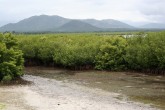The impact of climate change will become more intense and its effects will be irreversible. We will have to adapt to new physical and climatic conditions.
This article is the third in a series of monthly pieces that aims to prepare our readers for COP21, the UN Conference on Climate Change that will take place in Paris in November 2015. This time we will focus on adaptation, previously it was on mitigation, as the second main stream of the actions for addressing climate change.
The strategy of adaptation consists of facing up to the impacts and consequences of global warming by “adapting” our societies to the new environmental conditions. Climate change effects imply permanent changes; and sectors such as agriculture, tourism and energy production will definitively be affected. The EU is undertaking different actions in order to develop the adaptation strategy.
The White Paper ‘Adapting to climate change’
In April 2009 the European Commission presented the White Paper ‘Adapting to climate change: Towards a European framework for action’. It is based on four pillars: to build solid knowledge on the impact and consequences of climate change – data and information on climate change (for example: impact scenarios) should be available; to mainstream adaptation into other key policy areas such as agriculture, forestry and bio-diversity; financing, through the multiannual financial framework, financial services products, etc.; and to support international efforts on adaptation.
European Climate Adaptation Platform
The European Climate Adaptation Platform is an initiative of the European Commission. It was launched in March 2012. It provides information about the EU adaptation policy, on special features of countries, regions and cities, sharing helpful tools and methods for adaptation, and linking organizations that operate both at European and global levels through a detailed and updated database.
The website of the Platform proposes over 60 study cases. For instance, the Netherlands, thanks to the ‘Floods Risks and Safety in the Netherlands‘ project, has developed new methods to calculate the probability and the consequences of flooding. In Spain, to face the erosion of the Gomeznarro Park in Madrid, an improvement of the natural drainage and the rain water retention was carried out.
EU strategy on climate change
The Commission adopted an EU strategy on climate change in April 2013. It aims to make Europe more climate-resilient. It established three priorities: to operate through action plans designed and run by the Member States, but funded by the EU; to improve the information for decision-making; and to include “climate proofing actions” in key vulnerable sectors such as by ensuring that infrastructures are more resilient.
The covenant of “Mayors initiative on adaptation to climate change”
Another initiative is the so-called: “Mayors adapt” -The covenant of Mayors initiative on adaptation to climate change was launched in March 2014 to help the cities involved to get prepared for incidents arising from climate change. Cities signing up to the initiative committed themselves to following the EU strategy and to developing comprehensive local adaptation. Currently 95 cities from 19 EU Members States have signed the initiative.
European Climate Adaptation Newsletter
On 6 February 2015, the European Environment Agency (EEA) and the European Commission launched the joint newsletter: European Climate Adaptation Newsletter. It contains news and information on climate change adaptation action and on research activities across Europe.
Budget
By the Multiannual Financial Framework 2014-2020, at least 20% (of the 960 billion) of the European Budget is climate-related expenditure, both mitigation and adaptation. The two main financial instruments within the 20% threshold areHorizon 2020 and LIFE. Actually LIFE allocated 864,2 million to the sub-programme for climate action (adaptation, mitigation, governance and information).
Pope Francis visited the Philippines from 15-19 January 2015. He insisted on visiting Tacloban the area most affected by typhoon Haiyan, where more than 7.000 people died in 2013. The schedule, was interrupted by heavy rain and the congregation attended the Mass standing on the wet mud not only impressed the Pope but the millions of people following it through the media. The improvised homily of Pope Francis was a strong call to associate with the suffering of the people, certainly the Christian way to approach the long road to adaptation.
Zoé Vanobberghen


